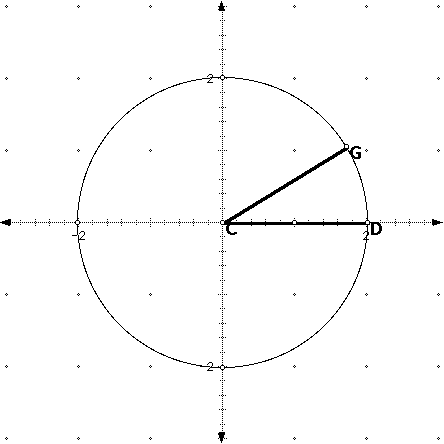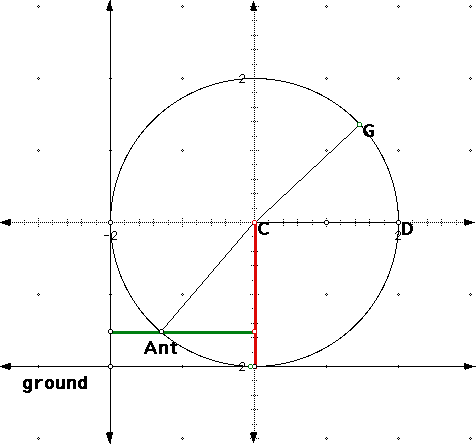
Most of the time, when students think about angles inscribed in a circle, they think about the unit circle with the center of the circle as the origin of the coordinate system. For example, <DCG would represent an acute angle in the first quadrant. As G moves on the circle in a counterclockwise direction, the angle is increasing.
(To open the GSP file for this image, click here)

In our ant example, we defined the angle in a non-standard position, that is, not with respect to the unit circle (To see the GSP file for this image, click here). Nevertheless, in the midterm there are always some students who want to work with the unit circle and an angle in standard position, and they get totally confused. To help remedy this delemma I am asking to think about the following:
What are the coordinates of the ant with respect to an angle situated in the unit circle?

Imagine that G moves around the circle until is coincides with the ant. That is the initial angle to use. Now define the coordinates of the ant so that they work for every position of the ant. You can test your coordinates by entering them into a spreadsheet and the comparing the data with your original height and distance data. You should get exactly the same values!!!!
Add this spreadsheet and your explanation of how you worked out the coordinates and why they work to your Ant package. If you can't link to the files, you can find the GSP files for the two pictures on the teachers' computer in Room 111/113.